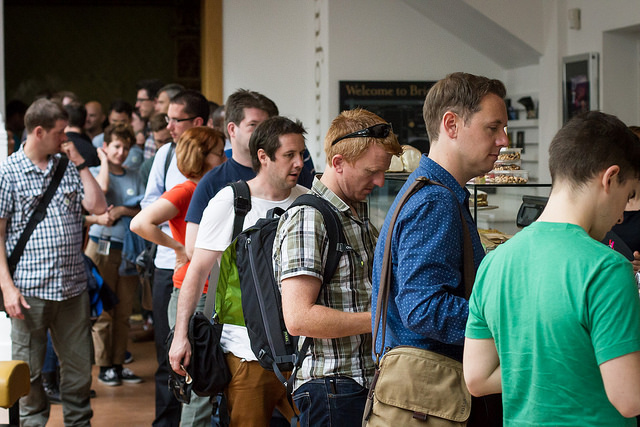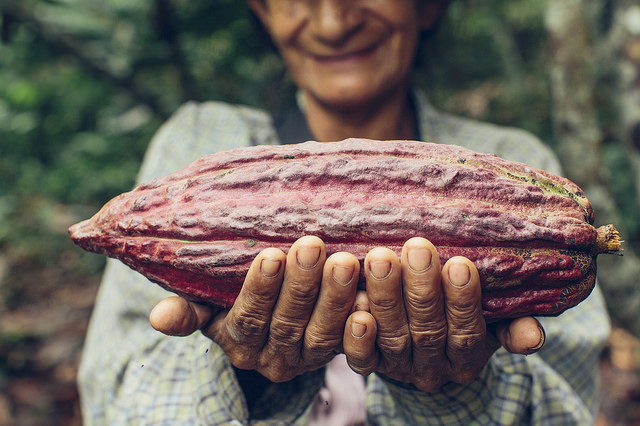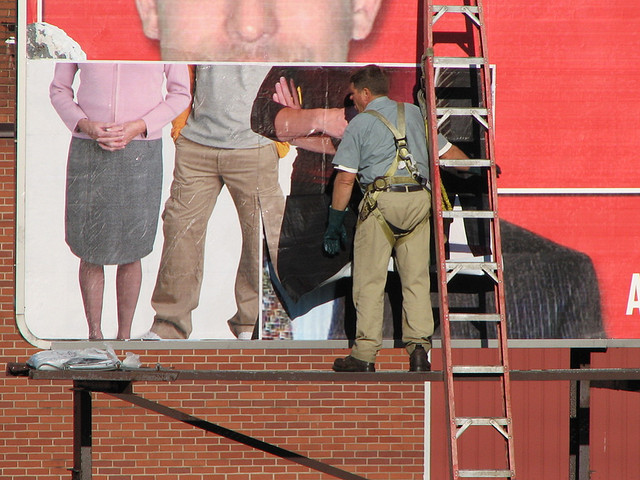Unlock the Magic in Your Story Now
Get the Free 20 questions to Ask Before Launching Your Idea workbook when you sign up for occasional updates.
Get the Free 20 questions to Ask Before Launching Your Idea workbook when you sign up for occasional updates.
Articles filed in: Storytelling
Sorry: Easy To Say, Not So Easy To Do
filed in Marketing, Storytelling, Strategy
 The assistant serving at the counter apologised for the long wait, then for not having received the order and finally for having no change. The cycle continued with every customer she served. There was a sorry for the wrong order given and one for the fact that the croissants hadn’t arrived that morning. And with each one her shoulders drooped a little more, along with the smile she tried to wear. Her job was to be the face of a million dollar small business and it was obviously no fun.
The assistant serving at the counter apologised for the long wait, then for not having received the order and finally for having no change. The cycle continued with every customer she served. There was a sorry for the wrong order given and one for the fact that the croissants hadn’t arrived that morning. And with each one her shoulders drooped a little more, along with the smile she tried to wear. Her job was to be the face of a million dollar small business and it was obviously no fun.
It’s become easier than ever to say sorry now that we can do it in public.
An email fired off in seconds. A 140 character public contrition on Twitter and you’re done.
“We’re sorry. We try, we don’t always get it right.”
Businesses have teams of people who can respond to complaints and fewer who are held accountable for fixing things. Sorry in isolation does not constitute an apology. Every apology has two parts. The admission that something went wrong, followed by the action taken that will mean it doesn’t happen again.
So when the Telco apologises for interrupting customers at the weekend. The apology must be more than an admission. Part two involves changing something so that it doesn’t happen again.
When the airline cancels flights, says sorry, then tells passengers to rebook themselves on the next available, the refund shouldn’t take fifteen uncertain business days to process.
When you or your staff start and end the day by apologising to every single customer it’s time to look at what isn’t working and to fix it. We need to understand why people were unhappy, where we went wrong and then to follow through, showing them that we’re sorry by doing better next time.
A sorry doesn’t help or excuse your business unless you back it up. Being sorry means doing something to make things better. Saying sorry should mean that you care enough to do that.
Your brand story is always less about what you say and more about what you do.
Image by Marc Thiele.
Satisfaction Vs. Sentiment
filed in Marketing, Storytelling, Strategy
 Have you ever filled in one of those, ‘we value your feedback’ customer satisfaction surveys at the end of a meal or a service call? Perhaps you have used them to ask customers to rate your service? The theory being that satisfied customers are the end game. Deliver on expectations and people will surely come back.
Have you ever filled in one of those, ‘we value your feedback’ customer satisfaction surveys at the end of a meal or a service call? Perhaps you have used them to ask customers to rate your service? The theory being that satisfied customers are the end game. Deliver on expectations and people will surely come back.
In a world of infinite choices customer satisfaction is no longer the gold standard—it’s the minimum requirement, the ticket of entry, something we have come to expect. And most businesses deliver on that expectation.
Satisfaction is the metric of business mechanics, the systems and processes, the operations and moving parts. Sentiment is the pulse of your brand—its heart and soul. Satisfaction can be measured with tick boxes, while sentiment is perceived and felt. The distinction is the difference between a product that works and one that we feel we can’t live without.
As customers we demand to be satisfied and if dissatisfied we know we can vote with our feet. But what we long for deep down is something that we can’t and don’t articulate. The unexpected. Surprise and delight, the feeling of experiencing something more than was anticipated.
Something that can’t easily be measured.
Beloved brands don’t simply leave customers satisfied. They don’t deal in expectations, they deliver the unexpected and strive to change hearts, not minds.
The same opportunity is open to you.
Thanks to Stuart Hall of AppBot for the inspiration. Image by Joe Penniston.
Two Important Characteristics Of Successful Innovations, Products And Services
filed in Marketing, Storytelling, Strategy
 Successful innovations always start with the customer’s story.
Successful innovations always start with the customer’s story.
The products and services people use AND keep coming back to, create a change in that story.
There is life before the product or service existed and a different life after.
And so if follows then, that we succeed by thinking less about what we’re creating, and more about what change we are creating. Starting with their problem and not our solution isn’t something that comes naturally to us, which is why commodities exist.
Meaningful innovations and brands that we come to love, make us feel different because that’s what they were designed to do from the outset. The magic happens when we put the customer’s story front and centre.
Image by Nest.
How To Find Tomorrow’s Customers
filed in Marketing, Storytelling, Strategy
 Most businesses, whatever their size are focused on growth. We want more leads, more fans, readers or subscribers, who will become more customers, resulting in more sales and more profits.
Most businesses, whatever their size are focused on growth. We want more leads, more fans, readers or subscribers, who will become more customers, resulting in more sales and more profits.
We usually have a plan to get them, which involves cultivating the people we hope will be tomorrow’s customers. And all the while we are doing that we often forget to serve the people who have already showed up—the ones who have said, “we’re here, take us to where we want to go”.
So we move on to the next thing. We innovate and build and create for people who may never arrive, instead of understanding the problems to solve for the people we know.
It turns out that we find tomorrow’s customers by relentlessly focusing on the needs of the customers we have today.
Image by Jerry Wong.
Value Creation And Stories To Believe In
filed in Marketing, Storytelling
 Just 574 To’ak chocolate bars were produced in 2014 using hand sorted, heirloom cacao beans harvested from rare Ecuadorian trees. Each bar is engraved with an individual number, packaged in a Spanish elm wooden box and comes with a specially designed tasting tool (touching the chocolate with your fingers can alter the flavour). A single 50gram bar will set you back $260.
Just 574 To’ak chocolate bars were produced in 2014 using hand sorted, heirloom cacao beans harvested from rare Ecuadorian trees. Each bar is engraved with an individual number, packaged in a Spanish elm wooden box and comes with a specially designed tasting tool (touching the chocolate with your fingers can alter the flavour). A single 50gram bar will set you back $260.
Who decides what a chocolate bar is worth and on what evidence do they base that decision?
How do we know when to pay more or less?
Value is in the heart of the beholder. More often than not value is perceived, not calculated. It’s irrational, intangible, unpredictable and messy. The customer is not paying for the rare beans or even the tasting experience— she’s paying for the joy that believing the story brings her.
Value creation is the responsibility of the marketer. It’s our job to give people stories to believe in, not just advantages to measure.
Image by USAID.
Before You Create Marketing
filed in Marketing, Storytelling, Strategy
 Recognise that’s it is not your job to create marketing. It’s your job is to as Peter Drucker said,
Recognise that’s it is not your job to create marketing. It’s your job is to as Peter Drucker said,
to create and keep a customer.
Before Nespresso people paid for coffee by the jar or went to Starbucks. Before iTunes people waited for CDs to be released and shipped. Before Kindle we needed bookcases and took one book on holiday.
What happens in people’s lives because your product or service exists? That’s a more important question to ask than how many brochures will we print. You can worry about getting George Clooney to endorse you later.
Image by Eddie Codel.
How Does Your Marketing Really Make People Feel?
filed in Marketing, Storytelling, Strategy
 Imagine it’s a busy Thursday morning and you’re replying to the emails that came in overnight from people you were eager to hear from, when out of nowhere an unsolicited sales email interrupts your flow. Of course it’s just one email, it only takes a second to delete it, so where’s the harm in a business owner casting her net as wide as possible? After all someone might bite.
Imagine it’s a busy Thursday morning and you’re replying to the emails that came in overnight from people you were eager to hear from, when out of nowhere an unsolicited sales email interrupts your flow. Of course it’s just one email, it only takes a second to delete it, so where’s the harm in a business owner casting her net as wide as possible? After all someone might bite.
The problem we’re faced with as business owners and marketers is that just one email from lots of people trying to cut through the clutter creates more clutter. And people, (the ones you are hoping will become your customers) who are on the receiving end are jaded by it all. Here’s the email that landed in my inbox. How would it make you feel?
——————————————————————————————————————————————————————
Good Morning.
[You don’t know me, so who gave you permission to interrupt my day?]
In August we launched our 27th Annual edition of XYZ Magazine.
[Why should I care?]
XYZ magazine is a high quality “coffee Table” styled magazine, which is kept for many years.
[How does this help me?].
The 2014/15 issue is on Sale for a year at newsagencies, we also sell it at the XYZ Exhibition and the following year we give the magazine out to Brides attending the Exhibition, (while stocks last).
[What are you trying to sell me?]
So, In essence you are receiving three years of exposure for the price of one.
[How do you know ‘exposure’ to your readers is my problem?]
We are running a SPECIAL OFFER until the 18th of December 2014!
[This is not my emergency.]
No payments are due until 2015 and we can offer payment packages.
[You still haven’t told me what you’re selling and why it matters to me.]
The XYZ Exhibition will be held on the 1st of March 2015 at the XYZ Hotel.
[Not sure why I need to know.]
If you would like further information on XYZ please either email me or call me on………
[Delete.]
Have a lovely day.
[Do you mean that?]
—————————————————————————————————————————————
Traditional advertising and PR’s obituary is constantly written and re-written, but we’re so scared of being invisible that we continue to use marketing tactics that do nothing to help grow our businesses. What’s worse than being invisible is alienating people.
The best marketing leads with the customer’s story. Every one of us has the opportunity to do that and to practice empathy, even if we don’t have the budget for a beautiful two minute film.
[Update: Apparently the link doesn’t work in the US. This is an unofficial version without the original soundtrack.]
Image by Cedric Lange.
The Trouble With Marketing And The Opportunity For The Future
filed in Marketing, Storytelling, Strategy
 I met with a prospective client recently who had acted on conflicting advice about marketing tactics from a couple of different sources and failed to get the results he’d hoped for.
I met with a prospective client recently who had acted on conflicting advice about marketing tactics from a couple of different sources and failed to get the results he’d hoped for.
“The trouble with marketers is that each one tries to sell you on their solution.” he said. “The SEO guy will tell you that SEO is the answer. The social media agency will say that Facebook marketing is the way to go. The content marketing firm will tell you that content is king.”
“So what do you think I’m here to sell you on.” I asked.
“Well, getting to know your customers and understanding their story, so that we can serve them better, which will make our story better in the long run?” he replied.
The trouble with marketing is that we’ve separated it from everything else we do to serve our customers. We’ve come to regard marketing as something that gets done after the work, to promote the work. But marketing is the work, and the work, if it’s meaningful and relevant should be the promotion. The story we want customers believe is as valuable to our businesses as the products we sell and the services we design.
If we keep trying to use the tactics in isolation just so we can feel like we’re ‘doing marketing’, then we’re killing our own stories along with those of the customers we serve. You don’t want your customers to trip up over your marketing on a ‘super pavement sign’ you want them to experience it in a meaningful way.
Marketing isn’t something you do. It’s something you live—if you choose to.
Image by justified sinner.
The Characteristics Of Great Brand Stories
filed in Marketing, Storytelling
 Great brand stories…..
Great brand stories…..
Are rooted in truth.
Created with intention.
Have a bigger purpose beyond a single bottom line.
Add intangible value to something that was once a commodity.
Take time.
Make the customer the hero.
Change how people feel about a product or service.
Start with the customer’s story.
Don’t matter to everyone.
Appeal to the heart twice as much as the head.
Create evangelists and naysayers.
Make people feel like they belong.
Give people something to talk about, but more importantly something to believe in.
Are shared.
Image by György Rétvári.
 As marketers we tend to get lost in the tactics like designing flyers, scheduling tweets and growing a Facebook following—this makes us forget the more important stuff.
As marketers we tend to get lost in the tactics like designing flyers, scheduling tweets and growing a Facebook following—this makes us forget the more important stuff.